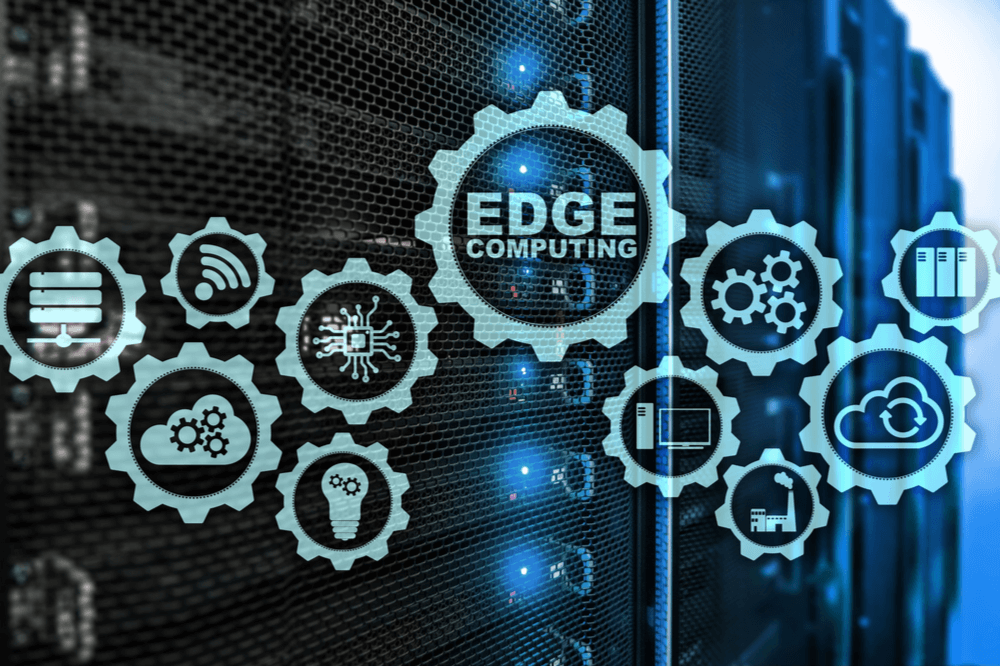
Megatrends combined with disruptive technology cause rapid technological shifts that are mind-boggling. The expansion of the Internet of Things (IoT), the deployment of 5G mobile networks, and the advancements in edge computing technology and edge computing applications are transforming the world.
Global Expansion of the Internet of Things
TechJury.net reports that there is ongoing explosive growth in the Internet of Things. By 2018, there were approximately 10 billion IoT devices. The estimates are that this number will increase to 25 billion by 2021 and may increase up to 64 billion devices by 2025.
The market value of the IoT is the total value of the devices, the connectivity, the software, and the IT services that support them. In 2018, the market value of the IoT, reported by Global Data, was $130 billion. The estimates are that the market value will expand to $318 billion by 2023 and experience a compounded annual growth rate of 20%.
Deployment of 5G
Connectivity of the IoT devices improves substantially by the deployment of 5G mobile networks. 5G network connectivity is already available in some major American cities. 5G will cover most of America by 2020. 5G is also undergoing rapid deployment in Estonia, China, Japan, South Korea, Sweden, and Turkey. The more global deployment will likely follow.
Statista says that the 5G system increases the transmission speed by up to three times over the existing 4G/LTE cellular networks. Latency reduces and bandwidth increases. 5G compares favorably with fiber-optic cabling because the wireless signal transmission is very fast and the installation of 5G is more cost-effective.
A 5G signal is a higher frequency that easily penetrates barriers like cement walls. 5G antennas need to be deployed by the millions because the signal strength is not able to be transmitted over long distances. Hybrid networks that transmit signals over longer distance using 4G/LTE and fiber will continue in use in many parts of the world. However, 5G dramatically increases the “last-mile” connectivity capability and capacity.
Edge Computing
Edge computing is an IT system structure that pushes out the computational requirements as far out to the edges of the IoT as possible. Billions of smart devices do not work efficiently when they all must connect to a centralized server to perform any function. Network efficiency can be slowed to unacceptable levels by the huge amount of data transfer required to support so many devices from a centralized location simultaneously.
How does edge computing work?
One solution that improves network efficiency is to use edge computing. This strategy is to have the smart devices handle locally as much of the computational load as possible.
Here is an example of how this works with a smart home security system connected to the IoT:
Smart-home security systems may use biometrics for identification, such as fingerprints, retinal scans, and facial recognition. These systems need to be able to recognize authorized users. Instead of having to communicate with a centralized server to obtain the encrypted information necessary to authorize entry, these systems can have the information about the authorized users programmed into the devices themselves.
In that way, the security device can perform the computational functions necessary to confirm a user’s identity and permit authorized users to enter. The security device only needs to send information collected, from failed-entry attempts by unauthorized users to the centralized servers.
The alert of an unauthorized attempt is forwarded to a centralized server to trigger additional security protocols and processing, such as alerting local law enforcement of a break-in attempt.
Mobile Edge Computing
The Internet of Things starts with 3.3 billion smartphones, which are already in use worldwide, according to VentureBeat. Smartphones are a type of edge computing device. This is predicted to expand to 3.8 billion smartphones by 2021. A natural extension of edge computing is mobile edge computing because of these billions of smartphones.
For example, when a smartphone user plays a live multi-player video game on their phone, the bulk of the game software downloads first when installing the game application. Only the dataset of the changes happening in the game needs updating with the application server.
This game application may be managed on a peer-to-peer basis using virtual servers, which are redundant and may be made available widely across the network in many locations.
Cloud Edge Computing
Cloud edge computing goes together with mobile edge computing. Cloud services come from multiple data centers in many parts of the world. One technique to use edge computing as a cloud-based service is the concept of creating a virtualized database.
A virtualized database is a layer on top of the underlying data that shows the data storage location. For a computation, only the exact data from its storage location is necessary to make the calculations. This reduces the need for making redundant copies of the entire database.
Edge Computing Applications
Many edge computing applications make using the IoT more effective.
Here are some popular edge computing applications to consider:
- AWS Greengrass — This provides secure local computing, messages, and data caching for IoT devices that sync up after a disconnect followed by a reconnect
- EdgeX — Open source edge computing applications sponsored by the Linux Foundation
- Cisco IOx — Connects IoT devices and the cloud, which extends to the fog (edge computing)
- Fog Director — Manages Cisco IOx systems for wide-scale production deployment
It is an exciting time, which is reminiscent of when the regular Internet commercialized starting around 1994/1995. The speed of adoption globally was so fast, at that time, that within a decade the Internet was everywhere. The commercialization of the IoT is happening faster. Within five years, the IoT will probably be everywhere.
All software developers and device designers should explore what is happening with edge computing to be able to incorporate these design standards in their work. Edge computing makes applications more functional and makes the IoT devices work better.
Leave a Reply
You must be logged in to post a comment.